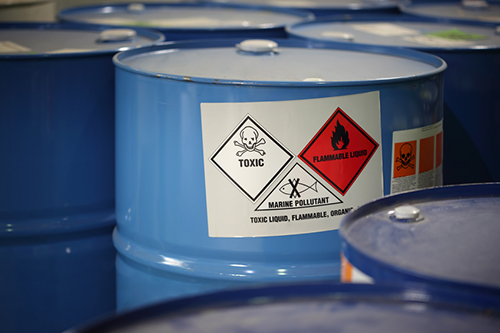TUESDAY, JUNE 4, 2024
The U.S. Department of Labor recently finalized a rule from the Occupational Safety and Health Administration to update the current Hazard Communication Standard to better protect workers.
The final rule will reportedly improve the amount and quality of information on labels and safety data sheets, allowing workers and first responders to react more quickly in an emergency.
About the Standard
The Hazard Communication Standard, established in 1983, provides a standardized approach to workplace hazard communications associated with exposure to hazardous chemicals. OSHA previously updated the standard in 2012 to provide a common and coherent approach to classifying chemicals and communicating hazard information, which went into effect in June 2016.
Those updates were the initial effort to align with the United Nations’ Globally Harmonized System of Classification and Labelling of Chemicals, which at the time was being implemented throughout the world, including in Canada, China, Australia, Japan and the European Union.
In the United States, the HCS revisions included updated criteria for the classification of chemical hazards, revised labeling provisions, a specified format for safety data sheets and revisions to definitions and terms used in the standard.
Then, in February 2021, OSHA proposed changes to the standard to align with the seventh revision of the GHS.

 |
| tunart / ©iStock.com |
|
The U.S. Department of Labor recently finalized a rule from the Occupational Safety and Health Administration to update the current Hazard Communication Standard to better protect workers. |
The department says the standard will now require labels on small packaging to be more comprehensive and readable. Additionally, it helps ensure “trade secrets” no longer prevent workers and first responders from receiving critical hazard information on safety data sheets.
According to the release, workers will benefit from changes in the standard, including:
The full final rule, effective July 19, can be read in The Federal Register.
The updates are reportedly aligned with the seventh revision of the GHS. It also addresses issues that arose from the implementation of the 2012 standard and improves alignment with other federal agencies and Canada.
Industry Reaction
The Society of Chemical Manufacturers and Affiliates issued press release saying that the update was “long-awaited” and will have financial and operational implications for specialty chemical manufacturers.
The society explains that benefits of the new rule include small package labeling, flexibility for chemicals already released for distribution, labeling provisions for bulk shipments and extended compliance dates for chemical substances and mixtures.
“Given the frequency with which member companies use small-capacity containers, SOCMA successfully advocated for a provision allowing companies to provide reduced information where it is not feasible to present the full required set of label information on certain small containers,” they noted.
“Under the final rule, manufacturers must only provide the updated label for each individual container with each shipment once the product reaches its customer. Warehousing operation employees do not have to open sealed pallets and boxes of containers to relabel them or repackage the product in preprinted bags.”
However, SOCMA does add that there will be continuing challenges, including hazard classification and potentially compromising trade secret concentration ranges.
“While this specification will reduce the burden on manufacturers, it is still unclear to what extent the rule would require manufacturers to anticipate downstream chemical uses,” the society wrote.
Tagged categories: Coating Materials; Coating Materials; Construction chemicals; Container labels; Department of Labor; Government; Hazard Communication Standard (HCS); hazardous materials; Hazards; Health & Safety; Health and safety; Material Safety Data Sheets (MSDS); OSHA; OSHA; Program/Project Management; Regulations; Safety Data Sheets